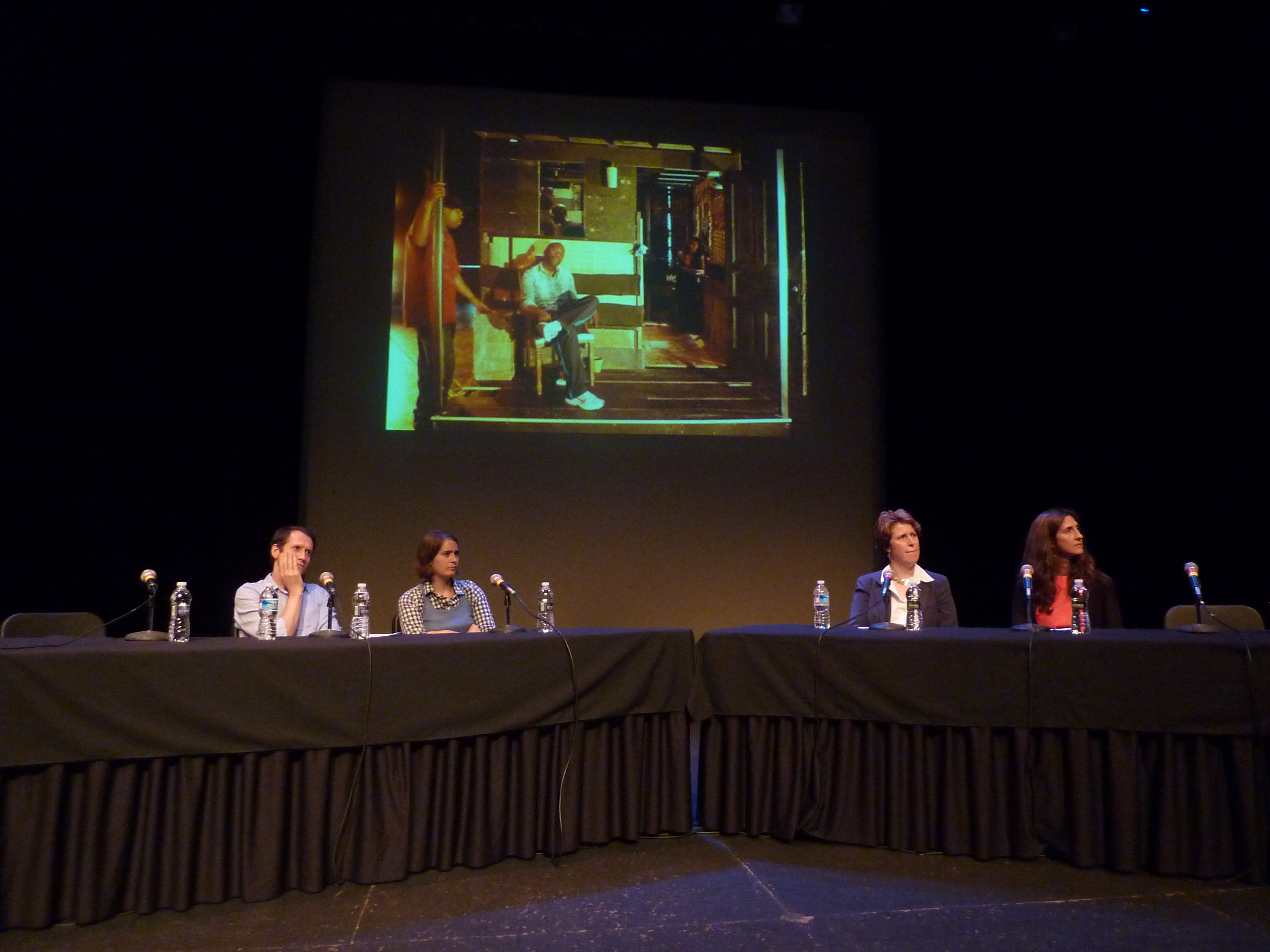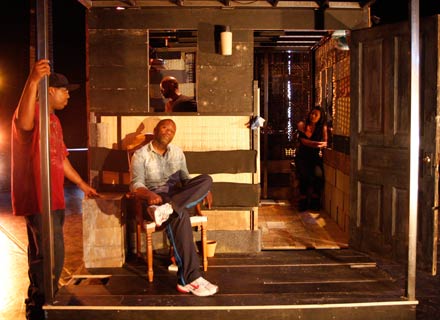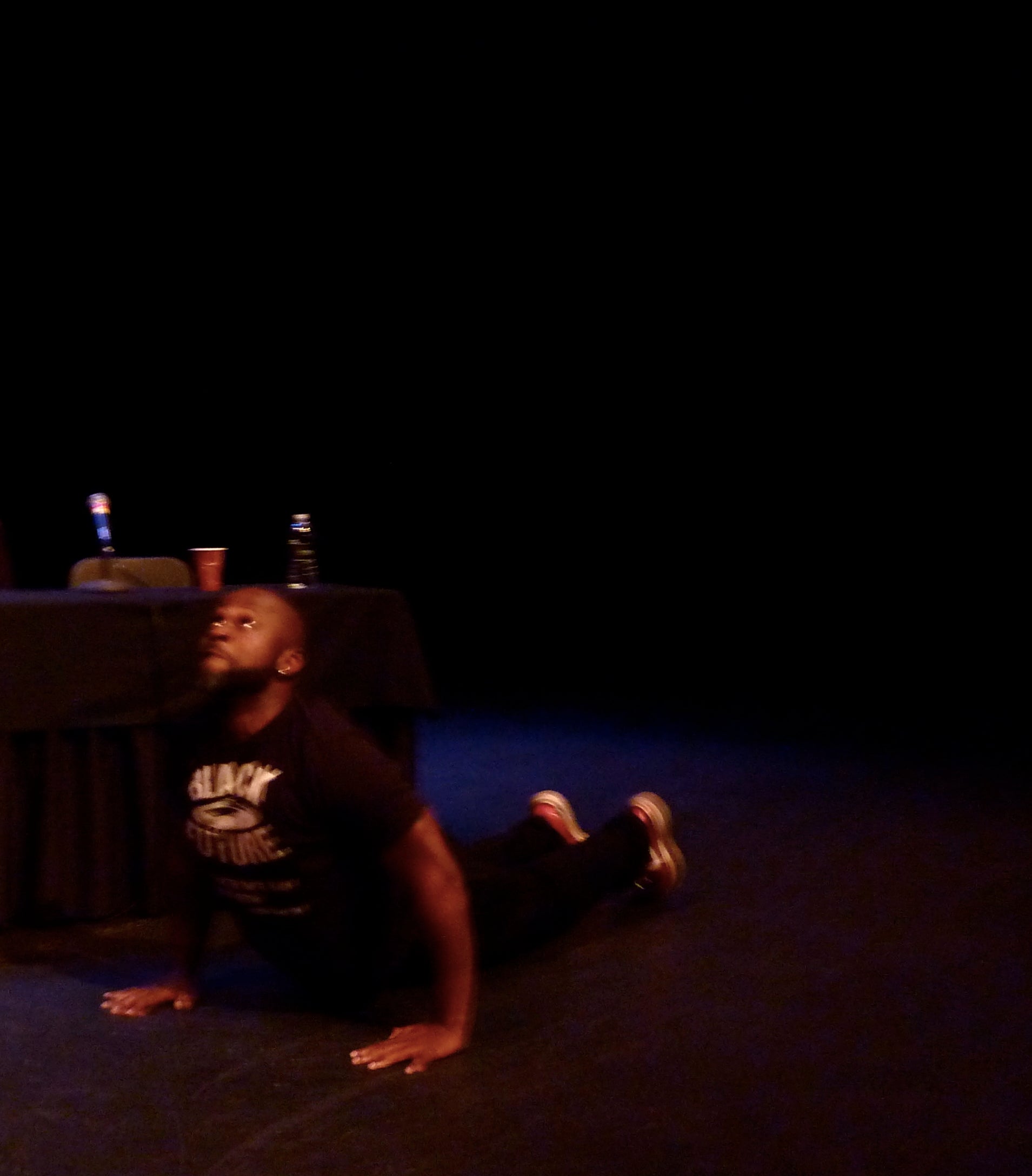Sustainability and the poor: Will the two ever get along?
In connection with its production of red, black & GREEN: a blues, presented as part of the Live Arts Philly Fringe festival, the Annenberg Center last evening hosted a panel that sought to address how to engage communities in sustainability issues. It proved an enlightening mix of provocative questions, thoughtful answers, and rousing audience response.
The writer and performer of red, black & GREEN: a blues, a multi–media spoken word piece, Marc Bamuthi Joseph, served as moderator, or “mediator,” as he termed it, of the event. First, though, he recited a snippet of his work — it involved personalities in Chicago and the Sudan and concluded with the phrase “if you’re brown, you cannot go green till you respect black life.”
Wearing a t-shirt that read “Black Future” and bright red running shoes, he accented his narrative by leaping around the non-stage of the auditorium in hip hop fashion, occasionally revealing a matching red belt.
He then praised the assembled panel members and their dedication to “attack, address and resolve” the matters his work deals with. He asked each one — Katherine Gajewski, Director of Sustainability for the City of Philadelphia, Amy Hillier, Assistant Professor at the University of Pennsylvania School of Design, Aaron Levy, Executive Director for the Slought Foundation, and Kira Strong, Vice President of Community and Economic Development, People’s Emergency Center (PEC) — to talk about their work.The latter two organizations are nonprofits based in West Philadelphia.
Of her emphasis on mapping in her planning instruction and research, Hillier noted that “geography is one of the primary ways that a lot of us insulate ourselves from some of those truths Mark was talking about.” Levy added that for him performance and visual arts culture can be a way to knot together disparate threads between efforts like sustainability and the greater community.
When Joseph asked the panel to define how they measure success, Gajewski was quick with a ready answer since Greenworks, her bailiwick, is all about metrics and goals. Strong said if she was “out of business” in ten years, she’d consider that the ultimate measure.
Education emerged as a strong theme — both for people like Hillier, who says she uses the research of W.E.B.. Du Bois (author of the 1899 classic The Philadelphia Negro) and the 1950s stories of red-lining and gentrification in Philadelphia neighborhoods as illustration for her future planners, and for Strong, who suggested that it was critical to build capacity for community members to not only have a seat at the table, but to recognize that there is a “table.”
Gajewski reminded those in the audience that Greenworks and its programs have captured the envious eyes of other big cities; while Levy suggested we could still learn a lot from Latin American, South American, and even African nations.
Still, “no matter how hard you all try, there’s a disconnect with the community,” insisted one audience member. “As integrated and diverse as Philadelphia is, it’s still very segregated.” Government could “pump money in,” she said, it could “plant trees and paint murals” and soon enough it would all look like it “never got touched again, after they cut the ribbon.” Or conversely, she added, things could stay “nice” and the area would become gentrified, displacing the very people the do-gooders had sought to help.
Strong acknowledged that she has been called “part of the problem” by creating affordable housing and then a “gentrifier” in the same week, but reiterated that a “multi-pronged” approach toward helping people engage within the available structures remained vitally important. It seems so simple, added Hillier, to invest in a community and not cause displacement, “but we’ve have a long history of failure.” The best tool she had to guard against this in the future, she said, was to “tell the stories” of what happens when those dangers aren’t heeded.
“If we’re going to win, environmentalism cannot be a segregated, activist event,” Joseph observed, suggesting that all communities had to be involved, not just the ivy tower ones. Picking up on that point, another audience member chided the panel for speaking to the converted. He also made an impassioned observation that some of the “small things” might be missed, swallowed up in a sea of grand ideas. For example, he asked, why was the lobby water fountain blocked by a table laid out with plastic water bottles? “We’re not in the Gobi Desert,” he said. “Why do we need them?”
Indeed, this writer had sidled behind that very table to get a drink of water from the fountain —and then sat shivering in an overly air-conditioned room as the temperature reached a pleasant 65-degrees outside.
Change takes time, said the various members of the panel. “Ultimately,” observed Joseph, “it boils down to personal accountability and personal values.”
Performances of red, black and GREEN: a blues will take place this weekend on tonight at 7:30 PM and Saturday at 8 PM. For tickets or for more information, visit AnnenbergCenter.org or call 215.898.3900.
Contact the reporter at jgreco@planphilly.com and follow her on Twitter @joanngreco
WHYY is your source for fact-based, in-depth journalism and information. As a nonprofit organization, we rely on financial support from readers like you. Please give today.






